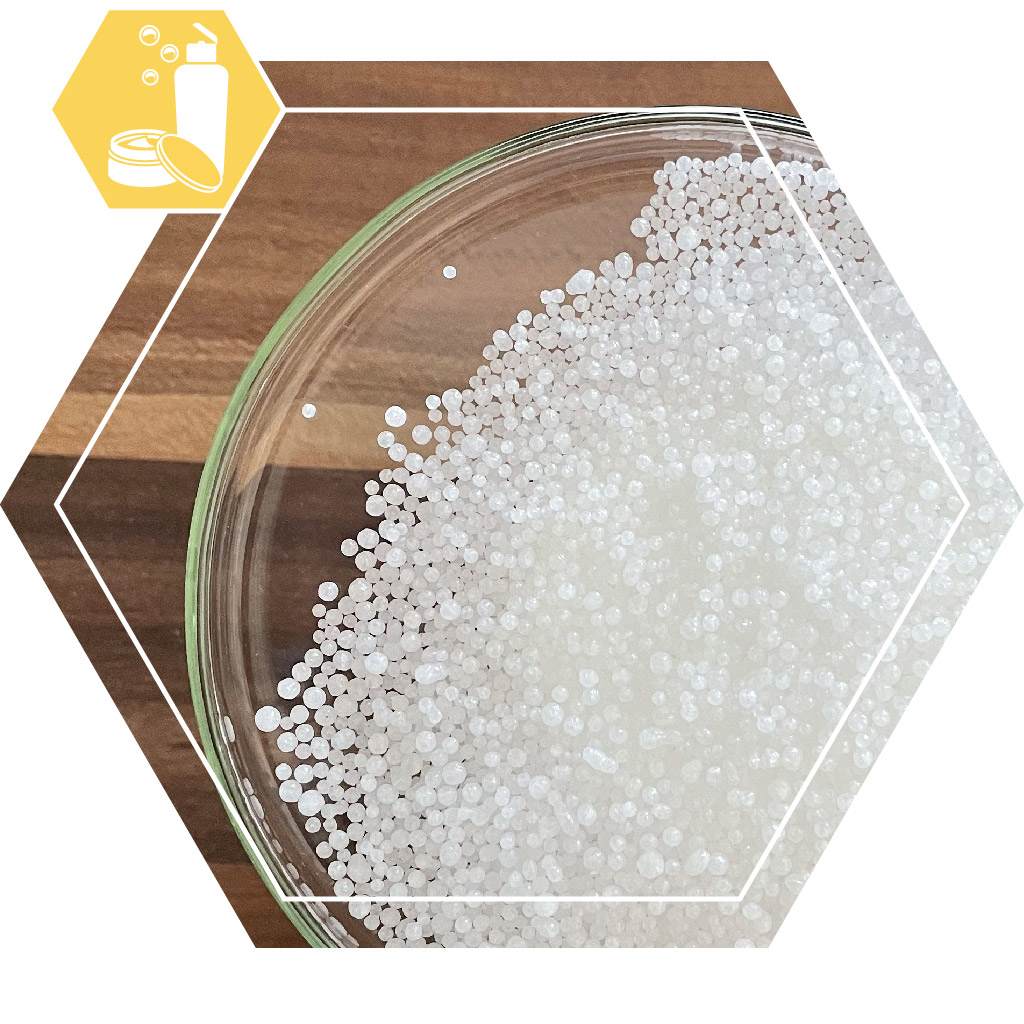Cosmetics raw material
Description
Urea is a drug for use in cosmetics. It can help with certain skin problems and retains moisture.
Use
In creams, it is best to dissolve in the water phase. In ointments: first crush the urea thoroughly, then mix thoroughly with the ointment. It is wise to lower the pH, otherwise it can decompose into ammonia, with an unpleasant odour.
Use in rinse-off cosmetics such as shower gel and shampoo are possible, but it is less effective because most of the urea is washed away during use.
As a rule, urea is used in a percentage of 1-10%.
Urea can also be used as a kind of bath salt: bath caviar. Just like ordinary bath salt, it can be coloured with water-soluble HexaCol and also scented: with a suitable fragrance composition. The beauty of bath caviar is that it not only looks attractive and not only scents the bath water, it is also a sensible addition that can do something good for the skin.
Urea is normally NOT used internally. Although not very toxic, it is only present in the body as waste and its consumption is pointless. If you think it has therapeutic value, consume on your own risk. However, De Hekserij does not sell substances intended for internal use, this substance is NOT an exception.
Properties
We supply urea as white round spheres. The compound has a long shelf life: store it cool, dry, dark and keep it in the tightly closed packaging.
In creams and ointments, it can be used as a keratolytic: a substance that softens and partially dissolves the stratum corneum of the skin. At the same time, it acts as a moisture-retaining compound. Especially with problems with a thickened stratum corneum such as keratosis this can be a good drug.
Durability
In principle, urea can be made from waste. In practice, however, it is made from nitrogen and oxygen from the air and from natural gas. In larger quantities it contributes to the nitrogen problem, because it is an excellent fertilizer and that is not desirable in all places. It is easily degradable in the environment. It is endogenous, non-toxic, non-irritating, not harmful.
Packaging
We pack this product in plastic (LDPE) bags.
Hazards
Urea is not classified as a hazardous substance. Nevertheless, we recommend to handle every substance wisely: keep out of reach of children.
Codes
Article number: 16032
Dutch name: Ureum
EC number: 200-315-5
CAS number EU: 57-13-6
CAS number TSCA: 57-13-6
INCI: UREA




